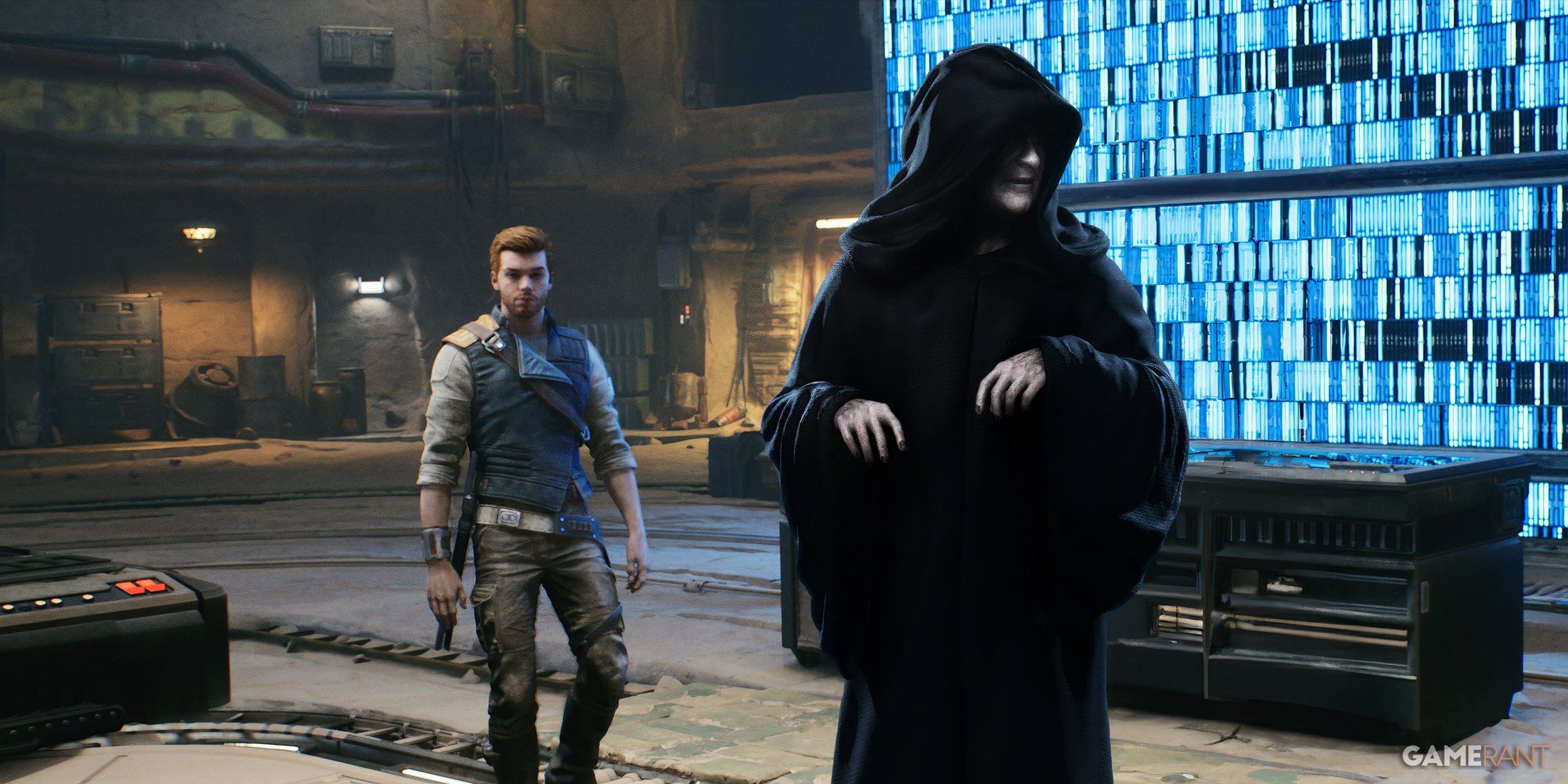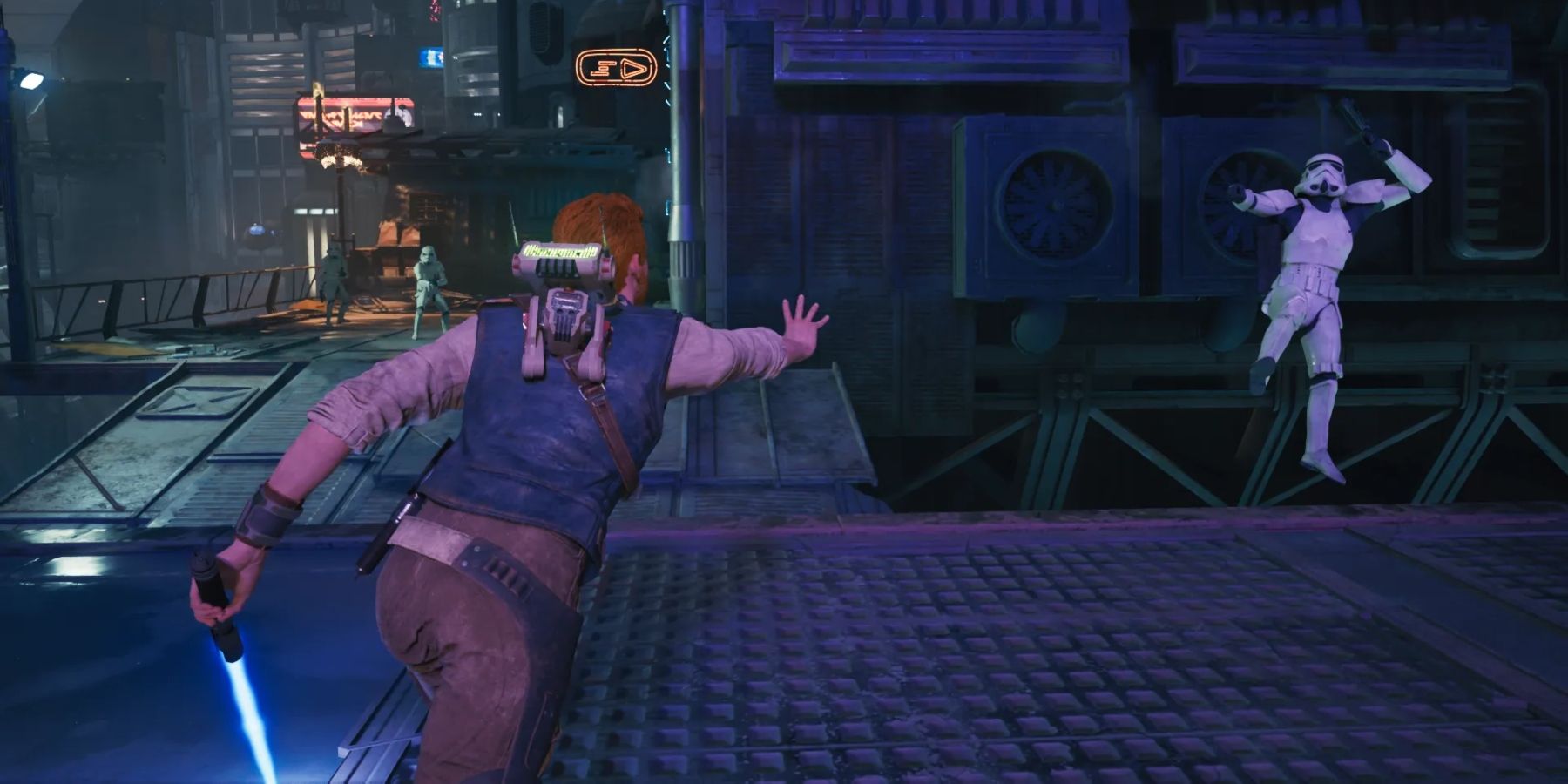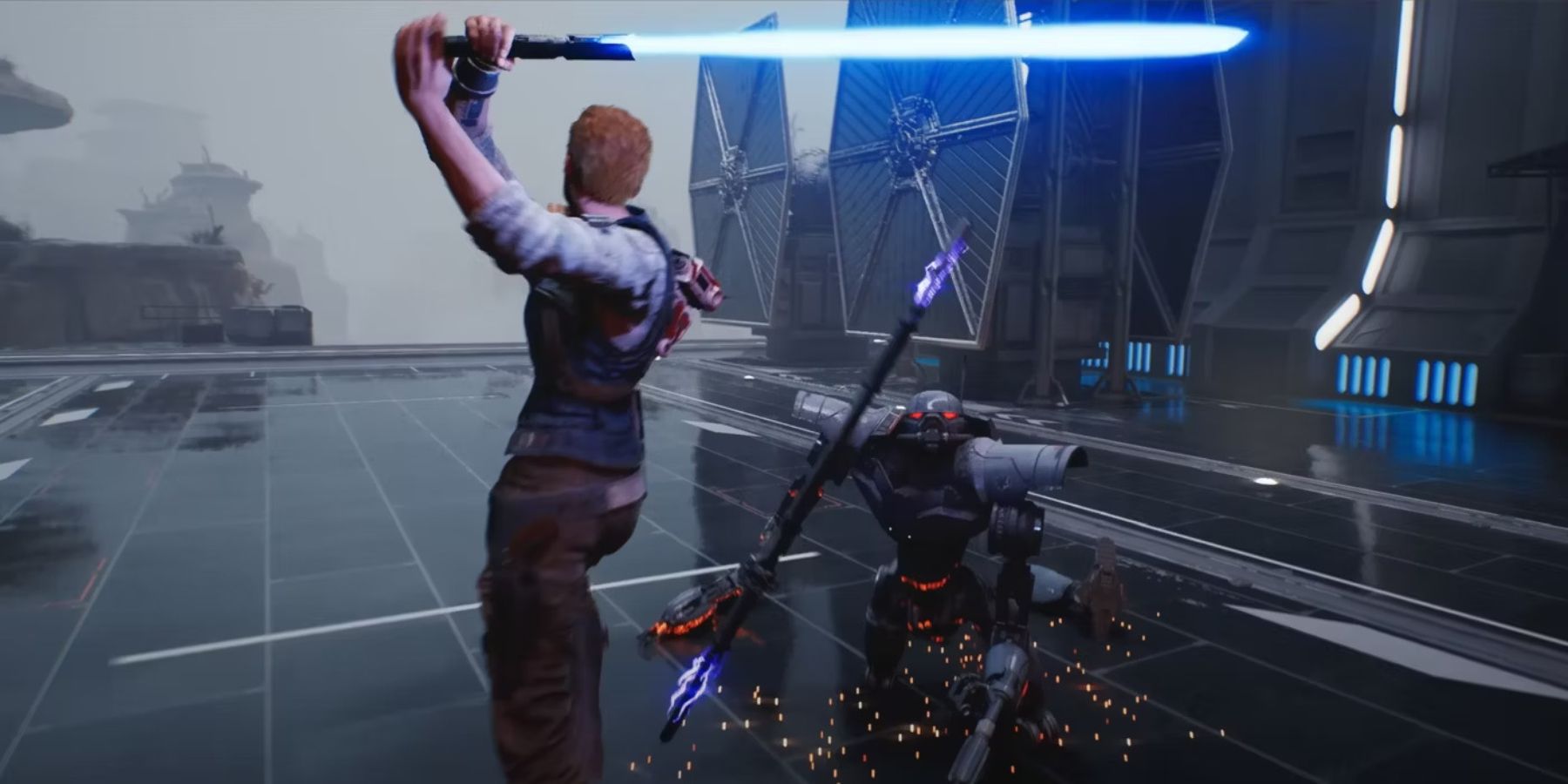The Force is an integral part of any Jedi-focused Star Wars game. The mysterious life energy that flows through all living things, the Force is a bit of an obtuse concept in Star Wars lore, being used in a variety of different ways in the canon, from an ethereal energy that influences the outcome of the universe to something that's controlled through Midi-chlorians and genetics. In Star Wars video games, the Force is often depicted in its simplest, most tangible form, giving the player the ability to push, pull, and throw enemies with ease. Star Wars Jedi: Survivor goes a long way in bridging the gap between these two versions of the Force.
Clearly made by a team of passionate fans, Star Wars Jedi: Survivor isn't afraid to dive head-first into the more mystical side of the Force, and what it means to be a Jedi that can wield it. But at the same time, Star Wars Jedi: Survivor is a video game, and with its primary purpose being to give the player the ultimate Jedi power fantasy, there's plenty of pushing and throwing people around with the Force as well. And on one platform, Star Wars Jedi: Survivor's Force powers feel even better to wield.
Star Wars Jedi: Survivor's DualSense Integration is Most Impressive
When it's integrated properly, the PlayStation 5's DualSense controller can greatly elevate the gameplay experience, and thankfully, Star Wars Jedi: Survivor integrates the DualSense extremely well, using every feature the controller has on offer. Arguably the best implementation of the DualSense in Jedi: Survivor comes when the player is trying to Force Pull an enemy towards them.
When the enemy is small, and light, the DualSense's adaptive triggers remain easy to pull, but when the player is trying to Force Pull a larger, heavier target toward them, the DualSense's adaptive triggers gain some resistance, requiring more effort on the players part to pull the trigger. This definite change in trigger resistance really helps to make Jedi: Survivor's Force abilities feel all the more impressive and powerful, especially when paired with the on-screen visuals of a gigantic space monster being forcibly dragged across the ground.
While the adaptive triggers are probably the most impressive DualSense integration from Star Wars Jedi: Survivor, it isn't content just stopping there. Jedi: Survivor also makes great use of the DualSense's haptic feedback technology throughout the entire experience. Igniting a lightsaber will initiate a satisfying boom in the controller, giving way to a light rumble as the lightsaber continues to vibrate in Cal Kestis' hand. Walking across different surfaces causes different types of vibrations in the DualSense, and each parry and block rewards the player with a powerful thud in the controller's grips.
Star Wars Jedi: Survivor even makes great use of the DualSense's most underrated feature: its speaker. The DualSense's speaker is often forgotten about completely by video game developers, but when it's used effectively, it can really heighten the immersion. Hogwarts Legacy recently made great use of the DualSense's speaker, adding a subtle whoosh sound effect whenever the player fired off a spell. Resident Evil 4 Remake also used the DualSense's speaker effectively, making the game's radio transmissions emanate from it during gameplay. Star Wars Jedi: Survivor follows in these games' footsteps, adding subtle sound effects to heighten a range of actions in the game, from parrying a lightsaber to slicing a terminal to hearing BD-1's adorable little chirps and whistles. And when it's all combined together, the DualSense easily makes Star Wars Jedi: Survivor an even better gameplay experience.
Star Wars Jedi: Survivor is available now on PC, PS5, and Xbox Series X/S





